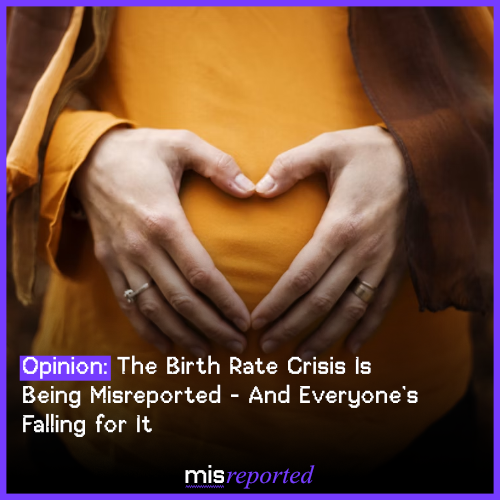Opinion: The Birth Rate Crisis Is Being Misreported - And Everyone’s Falling for It
Few subjects attract more confident conclusions than falling birth rates. They are routinely framed as evidence of political neglect, social breakdown or inadequate family policy. The prescription follows quickly: expand parental leave, subsidise childcare, adjust tax credits. The logic is familiar, and reassuring. If governments act decisively, the numbers will recover.
That confidence is not supported by the record.
Recent reporting has drawn heavily on commentary from The Atlantic and similar outlets to argue that insufficient parental support explains why people are having fewer children. The evidence marshalled is selective rather than false, and that distinction is important. Parental leave does matter. But it has been misreported as decisive, when comparative data suggests otherwise.
The same international cases frequently cited as models make the point. France, long treated in Financial Times and OECD analysis as the gold standard for pro-family policy, has seen fertility fall sharply despite decades of generous parental leave, childcare provision and cash transfers. The Nordic countries, often held up as proof that “it can be done,” now sit well below replacement. Japan and South Korea have expanded family policy at scale with little demographic effect.
These outcomes are not inconvenient exceptions. They are the central fact. Yet reporting repeatedly treats them as anomalies while presenting policy reform as the missing lever. This is not a factual error; it is a problem of proportionality. By elevating parental leave from contributor to cure, journalism narrows a structural phenomenon into an administrative failure.
There is a deeper distortion at work. Declining birth rates are framed as something deviating from the natural order, instead of a long-observed feature of advanced, urbanised, high-income societies. The Atlantic itself has previously acknowledged that prosperity, education, delayed partnership and shifting norms consistently depress fertility. Those forces dwarf any single policy intervention. To report otherwise is to compress complexity into narrative convenience.
The result is a subtle form of misreporting. Expectations are inflated. When expanded leave schemes fail to reverse demographic decline, trust erodes not only in policy but in the reporting that promised outcomes it could not deliver. Public debate becomes locked in a cycle of disappointment, searching for ever more ambitious interventions to solve a problem that does not behave like a policy malfunction.
None of this argues against parental leave. Such policies improve health outcomes, workforce attachment and family stability. But presenting them as demographic correctives rather than social protections misleads the audience about what governments can realistically achieve. That distinction matters, because it separates explanation from reassurance.
Misreporting today is rarely about inventing facts. More often it takes the form of editorial compression: reducing structural change into something fixable, actionable and morally legible. Birth rates lend themselves to this temptation. They produce clean charts, alarming headlines and an implied locus of blame.
The public deserves a more honest account. Demography does not respond on a legislative timetable. Journalism weakens itself when it implies that it should.


